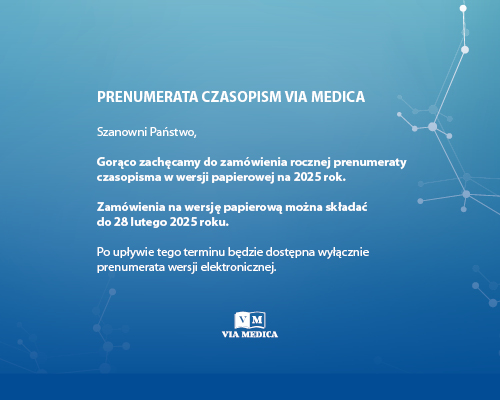Ectopic adrenocorticotropin (ACTH) syndrome (EAS) is a severe endocrine disorder resulting from the nonregulated expression and secretion of ACTH by neuroendocrine tumours (NETs) of varying localization, aggressiveness, and degree of histological differentiation [1]. Pancreatic NETs (PanNETs) represent approximately 4% of all NETs, account for around 1–2% of all pancreatic tumours [2], and comprise up to 15% of all EAS cases [1]. Although non-functional PanNETs occur in most cases (60–90%), functional PanNETs (F-PanNETs) [2], usually create diagnostic and therapeutic challenges [3]. Because the management of patients with EAS demands efficient diagnostics and treatment of hypercortisolaemia, NET, and its complications, it may require an individualized patient approach [1].
A 58-year-old female with arterial hypertension and type 2 diabetes was admitted to the Endocrinology Department due to abdominal pain, muscle weakness, and unintentional weight gain. The hormonal evaluation confirmed ACTH-dependent hypercortisolaemia — morning serum cortisol: 29.7 μg/dL, midnight serum cortisol: 30.9 μg/dL, ACTH: 87.6 pg/mL, mean urinary free cortisol (mUFC): 388.5 μg/24 h, serum cortisol after 1 mg of dexamethasone: 22.7 μg/dL. Both the corticotropin-releasing hormone (CRH) stimulation test and the high-dose dexamethasone suppression test results were negative, while the combined dexamethasone-desmopressin test result was positive. Magnetic resonance imaging (MRI) revealed an 8 × 5 mm pituitary lesion infiltrating the right cavernous sinus (Fig. 1). Considering the inconclusive results, chest and abdomen diagnostic imaging was undertaken, but no significant abnormalities were detected. Inferior petrosal sinus sampling was performed twice, with inconclusive results. Exploration of the sella turcica was performed; however, it was beyond resectability. Because of persistent disease, the pharmacological treatment of hypercortisolaemia was introduced.
The patient remained in follow-up for almost 10 years, and during this time received various medications (pasireotide s.c., ketoconazole, cabergoline); the features of ACTH-dependent hypercortisolaemia persisted despite pharmacotherapy. Eventually, in 2022, a focal lesion 15 × 14 mm in the pancreatic tail was visualized on a whole-body computed tomography (CT) scan (Fig. 2). Single photon emission computed tomography (SPECT-CT) somatostatin-receptor scintigraphy and Gallium-68 dotatate positron emission tomography/CT (Ga-68-HA-DOTATATE-PET-CT) did not reveal increased tracer accumulation and proliferative process features with high expression of somatostatin receptors. 18F-fluorodeoxyglucose PET/CT (18F-FDG-PET-CT) showed no proliferative hypermetabolic changes. The patient underwent endoscopic ultrasound with tumour biopsy, and histological examination identified neuroendocrine cells with positive ACTH, CD56, and chromogranin staining. The patient did not consent to surgery, and treatment with Lanreotide Autogel was introduced, resulting in normalization of hypercortisolaemia. The dimensions of the pancreatic lesion remained stable. After obtaining the patient’s consent, one year later, a tail resection of the pancreas was performed, obtaining complete normalization of the pituitary-adrenal axis. Since the procedure, the patient has undergone scheduled hormonal assessments and remains in good general condition. The hormonal parameters are summarized in Table 1. An MRI excluded the lesion recurrence.
|
Parameter |
Baseline results |
During ketoconazole treatment |
During cabergoline treatment |
During Lanreotide Autogel treatment |
After the pancreatomy |
Reference range |
|
Morning serum cortisol [μg/dL] |
29.7 |
34.4 |
11.0 |
9.1 |
14.3 |
3.7–19.4 |
|
Midnight serum cortisol [μg/dL] |
30.9 |
17.9 |
10.9 |
4.4 |
2.3 |
< 5.4 |
|
ACTH [pg/mL] |
87.6 |
75.1 |
22.6 |
19.9 |
32.7 |
6–48 |
|
mUFC [μg/24 h] |
388.5 |
549.8 |
185.0 |
87.40 |
26.0 |
4.3–176 |
The clinical case follow-up and diagnostics of ACTH-dependent Cushing’s syndrome (CS) may last several years. The use of more than one dynamic test, combined with imaging examinations, improves the accuracy of diagnostics and, in most cases, enables successful differentiation of pituitary tumours from NETs secreting ectopic ACTH [4]. However, the high receptor expression of well-differentiated NETs, differences in the NET type, the patient’s age and gender, and concomitant non-functional pituitary lesion, as well as the severity of hypercortisolaemia, could affect the results and make the diagnostic process of CS even more challenging [4]. Well-differentiated NETs may share molecular similarities with corticotrophic pituitary adenomas, clarifying the overlap in biochemical test responses [1]. The desmopressin test, in which the absence of ACTH and cortisol response is a characteristic of EAS, appears to be limited [1]; however, the test has approximately 83% sensitivity in indicating Cushing disease (CD) and 68% specificity in indicating EAS [5]. Indeed, as in the case of the described patient, the false-positive result for CD was probably due to the expression of the vasopressin V3 receptor by the PanNET.
The described case emphasizes that extensive diagnostics, as well as an individual patient approach, are crucial in the management of CS.
Conflict of interest
Authors declare no conflict of interest.




